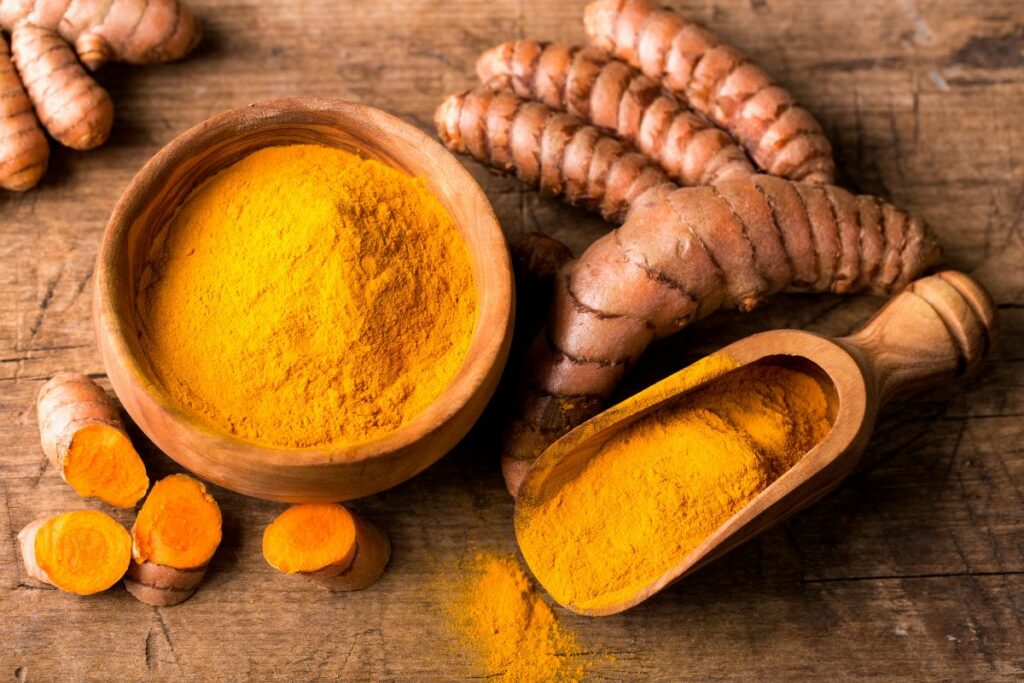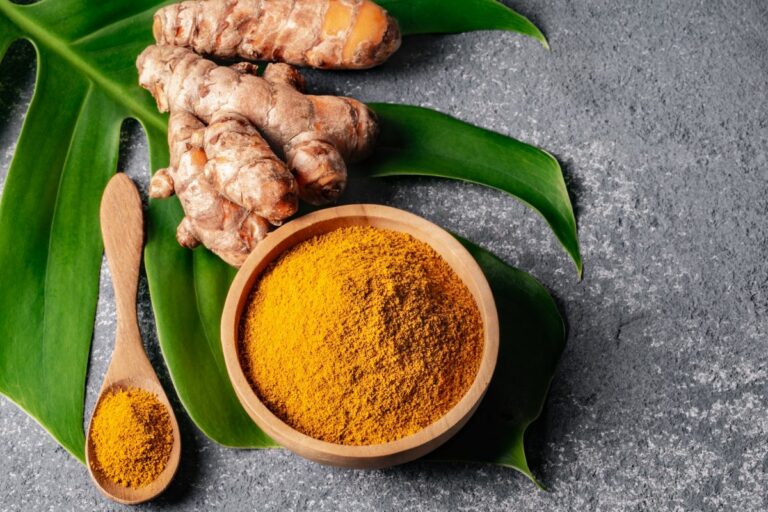
Turmeric root, often referred to as “golden spice,” has earned its reputation as a superfood thanks to its remarkable health benefits. This vibrant yellow root, primarily known for its active compound curcumin, boasts powerful anti-inflammatory and antioxidant properties.
Historically used in Ayurvedic and traditional medicine, turmeric is now widely recognized for its potential to alleviate pain, improve digestion, and boost overall health. Modern studies suggest that turmeric may also help in reducing the risk of chronic diseases and support immune function.
Its versatility in both culinary and medicinal uses makes turmeric an essential addition to any health-conscious lifestyle. Embracing turmeric root as part of your daily routine could be a simple yet effective way to enhance your well-being.
What Exactly Is Turmeric Root?
Turmeric root is a rhizome, belonging to the ginger family, Zingiberaceae. It is native to Southeast Asia, where it thrives in tropical climates. Turmeric has been cultivated for thousands of years and is widely used in cooking and traditional medicine.
The Different Types of Turmeric
There are several types of turmeric, each with its own unique characteristics:
- Curcuma longa: This is the most common type of turmeric used in cooking and herbal medicine. It has a bright yellow color and a warm, earthy flavor.
- Curcuma aromatica: Also known as wild turmeric, this variety has a more intense aroma and is often used in perfumes and cosmetics.
- Curcuma zedoaria: Known as white turmeric, this type has a milder taste and is sometimes used as a substitute for ginger.
The Fascinating History of Turmeric
Turmeric has a rich history that dates back thousands of years. It was first mentioned in ancient Indian texts as a sacred spice with medicinal properties. Over time, its popularity spread to other parts of Asia and eventually the world.
In addition to its culinary uses, turmeric has also played a significant role in cultural practices such as Hindu rituals and Buddhist ceremonies.
The historical significance combined with modern scientific validation makes turmeric root an exceptional addition to your diet and wellness routine.
Why is Turmeric Root Considered a Superfood?
Turmeric root has an impressive nutrient profile that qualifies it as a superfood. Its key active compound, curcumin, offers numerous health benefits:
1. Antioxidant Properties
Curcumin is known for its powerful antioxidant capacity. Antioxidants help neutralize free radicals in the body, reducing oxidative stress and potential cellular damage.
2. Anti-inflammatory Effects
Chronic inflammation is linked to many health conditions. Turmeric’s anti-inflammatory properties may help reduce symptoms associated with arthritis and other inflammatory diseases.
3. Cognitive Health Support
Emerging research suggests that curcumin may enhance brain function and lower the risk of neurodegenerative diseases like Alzheimer’s. It might do this by crossing the blood-brain barrier and reducing inflammation and oxidative stress in the brain.
4. Digestive Health Benefits
Turmeric can aid digestion by stimulating bile production, which is essential for breaking down dietary fats. It has also been used traditionally to treat digestive disorders.
5. Immunity Boosting Properties
The immune-modulating effects of turmeric can help strengthen the body’s defense mechanisms against pathogens.
6. Skin Health Enhancements
Thanks to its anti-inflammatory and antioxidant properties, turmeric may support skin health, potentially alleviating conditions like acne and psoriasis.
Potential Risks
While turmeric is generally safe for most people, some potential risks exist when consumed in high doses or over extended periods:
- Gastrointestinal Issues: High doses of turmeric can cause stomach upset or ulcers in some individuals.
- Blood Thinning: Turmeric has natural blood-thinning properties. People taking anticoagulant medications should consult their healthcare provider before adding high amounts of turmeric to their diet.
- Allergic Reactions: Although rare, some individuals may experience allergic reactions such as rashes or difficulty breathing.
Understanding these benefits and potential risks helps make informed choices about incorporating turmeric into daily diets. For personalized advice on how food affects your health, consider using biosensors like continuous glucose monitors (CGMs).

Scientific Evidence of Turmeric’s Healing Powers
- Bioavailability Issues with Curcumin
Curcumin, the main active compound in turmeric, is known for its potential health benefits. However, one major challenge is its low bioavailability when consumed alone. Bioavailability refers to how much and how quickly an active compound is absorbed and becomes available where it needs to work in the body.
Studies indicate that curcumin’s poor absorption, rapid metabolism, and quick elimination from the body limit its effectiveness. Research published in the journal Molecules highlights these issues and suggests methods to enhance curcumin’s bioavailability.
- Enhancing Absorption with Piperine
Combining curcumin with piperine, an alkaloid found in black pepper, can significantly enhance its absorption. Piperine inhibits certain digestive enzymes, thereby increasing curcumin’s bioavailability by up to 2000%, according to a study in Planta Medica (source). This combination is often included in turmeric supplements to maximize efficacy.
- Additional Research Findings
Several clinical trials have explored the health benefits of curcumin:
- Anti-inflammatory properties: A study published in Oncogene demonstrated curcumin’s ability to inhibit inflammatory cytokines.
- Antioxidant effects: Research in The Journal of Nutritional Biochemistry revealed that curcumin effectively neutralizes free radicals.
- Potential cancer-fighting properties: Curcumin has shown promise in reducing tumor growth in various cancers, as indicated by research.
Understanding these scientific insights helps underscore turmeric root’s potential as a powerful addition to your diet.
Ways to Incorporate Turmeric into Your Diet
Exploring how to use turmeric in cooking opens up a world of culinary possibilities. Turmeric can be added to:
- Smoothies and shakes for an anti-inflammatory boost
- Curries and soups for a rich, earthy flavor
- Golden milk lattes for a soothing drink
For those following a keto diet, here’s a simple recipe:
Keto Turmeric Cauliflower Rice
Ingredients:
- 1 head of cauliflower, grated
- 1 tsp turmeric powder
- 1 tbsp coconut oil
- Salt and pepper to taste
Instructions:
- Heat the coconut oil in a pan.
- Add the grated cauliflower and turmeric powder.
- Sauté until tender.
- Season with salt and pepper.
Considering supplements is another way to incorporate turmeric into your routine. However, it’s crucial to be mindful of potential risks or side effects from high doses. Always consult your doctor before starting any supplements. For those looking for convenient options, Shakeup Superfoods offers nutritious smoothies that include turmeric, making it easy to enjoy its benefits daily.
Conclusion
Turmeric root stands out as a superfood due to its rich nutrient profile and significant health benefits. The active compound, curcumin, is known for its anti-inflammatory and antioxidant properties. Scientific studies suggest potential therapeutic effects for conditions like arthritis, heart disease, and certain cancers. Turmeric also supports digestive health and may enhance brain function.

